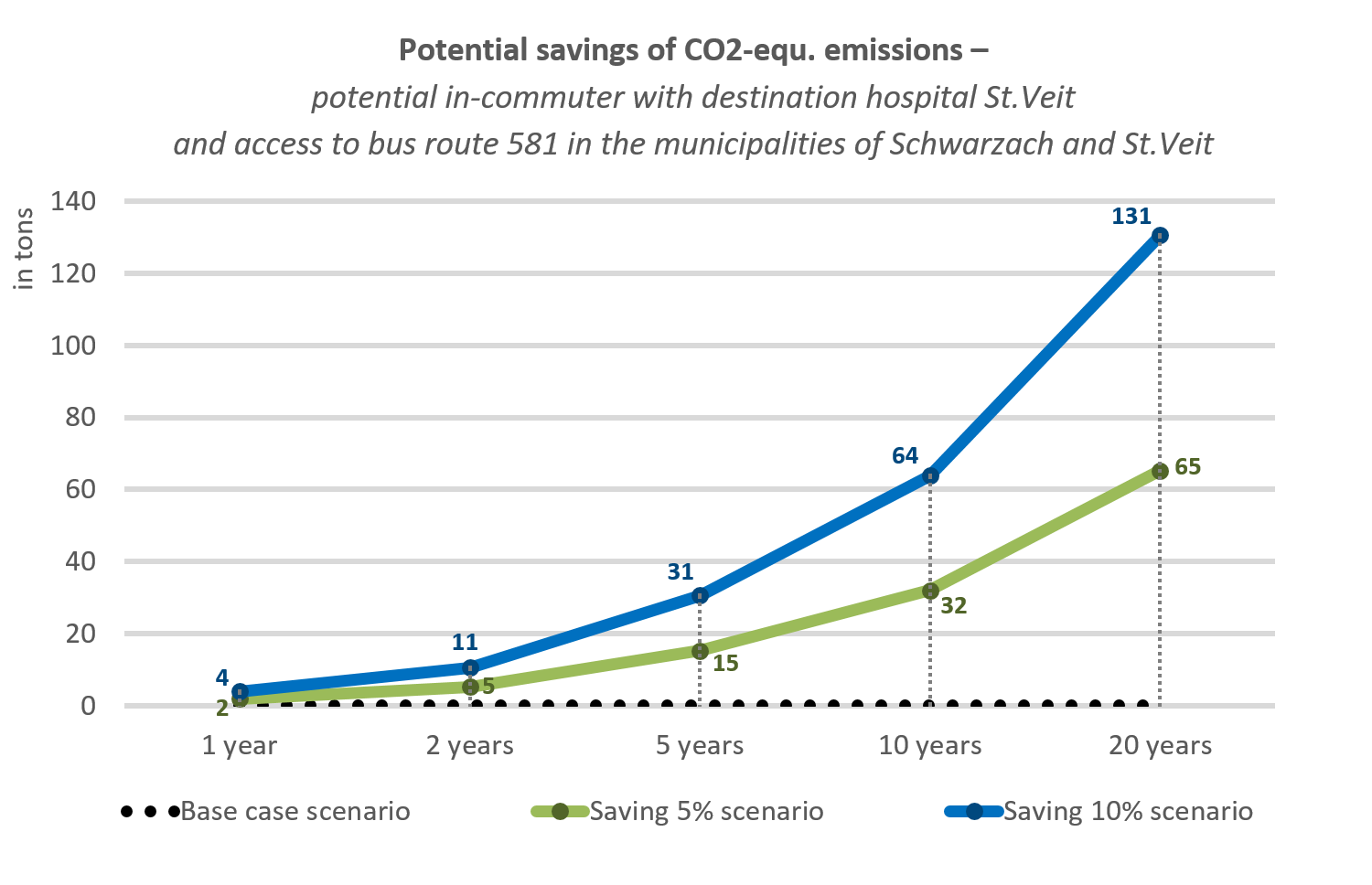Sankt Veit’s low carbon daily mobility strategy
Sankt Veit im Pongau (Austria) is a village counting around 3,700 people. To decrease car dependency in the area and decongest roads, regional stakeholders designed and implemented a tailored made low-carbon transport strategy targeting the daily mobility of workers.
Car dependency in daily mobility
In the area of Pongau most people use their private car for daily mobility. In Sankt Veit, 25% of the 1,056 active people living in the municipality work in health and social services. The State Hospital Sankt Veit im Pongau is a major employer in the region of Pongau, with around 340 employees and a capacity of 170 beds.
Public transport offers exist in the area but are not always well connected. For instance, there is a train station in Sankt Veit (3km away from the hospital), with a high-quality offer of regional train lines. A bus line connects the station to the hospital in about 9 minutes, but the frequency of buses is poor. Moreover, due to the steepness of the slope (positive change in altitude of about 200m), active mobility such as biking to work, is not common. Consequently, employees, patients and visitors use their private car and contribute to the high daily traffic. For example, 90% of the hospital’s employees use their car to get to work.
A tailor-made mobility strategy
In the framework of the Interreg Alpine Space ASTUS project, the RSA FG Researchstudio iSPACE together with the Pongau Regional Association, the Salzburg Transport Association and the Salzburg Institute for Regional Planning and Housing (SIR) studied the key elements of mobility in the area. They found out that most employees at Sankt Veit hospital are coming from the Pongau region and that most of them have access to a public transport station but still use their private car due to the defaults of the transport offer.
Therefore, to decrease car dependency and CO2 emissions, they developed a strategy targeting the daily commutes to work at the hospital. The strategy aims to encourage low carbon mobility on daily basis, therefore promoting sustainable yet affordable mobility offers.
During several workshops with local and regional stakeholders, alternative scenarios have been developed. Based on the analysis of a daily commuter to the hospital a high potential along the bus line has been identified. Therefore, actions have been developed to improve the offer of public transport, in particular:
- increasing the frequency of bus rides between the hospital and central station
- improving the coordination of mobility offers with shift work
- implementing awareness raising measures and incentives such as attractive ticketing (for instance, involving the administration of the hospital in the promotion of the bus line towards employees and in the future parking management to increase the parking pricing once the public transport offer is satisfying).
It is foreseen that the action can benefit 340 employees of the hospital, 180 employees living and working near the bus line 581 and 1,100 inhabitants. Depending on the uptake of the offer by daily commuters of Sankt Veit hospital, the savings in terms of CO2 emissions could be significant. By 2025, between 10 and 20 tons of CO2 emissions could be avoided, raising to 50 to 100 tons in 25 years. And the benefits also go to workers, who can save money by using public transport compared to their private car (maintenance, gas etc.)
The strategy was developed following ASTUS methodology, which is based on the assumption that mobility solution cannot be one-fits-all but place-based. ASTUS proposes tools to analyse mobility issues at local level in order to identify the main challenges and target groups and gather the relevant stakeholders to ensure a good mobility governance. The project also developed a typology of Alpine territories, that other Alpine regions can use to look for inspiring sustainable mobility measures implemented.
